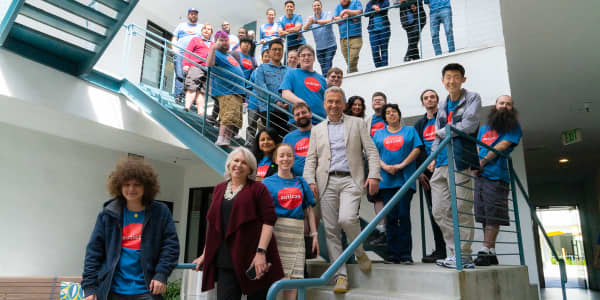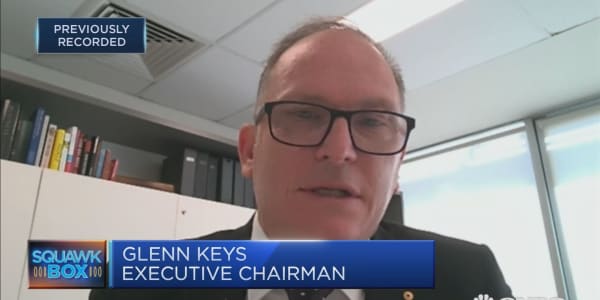It's not every day that an entrepreneur comes up with an idea for a trillion-dollar business. But some futurists can spot opportunities that are out of this world.
Take serial entrepreneur Eric Anderson, co-founder and co-chairman of Planetary Resources. This aerospace engineer who dreamed of becoming an astronaut plans to mine treasure on asteroids — everything from water and diamonds to platinum.
With the backing of $13 million from A-list investors — including Virgin's Richard Branson and Alphabet founder Larry Page and Executive Chairman Eric Schmidt — the company has already launched a test vehicle into space and plans two more this summer. Already, the company has had more than a dozen R&D contracts, with NASA, Darpa, the Department of Defense and private companies, to develop such technologies as optical communication lasers, space drones, 3-D printing technology for satellites and hyper-spectral imaging to measure the composition of materials.
The prospects for the venture's future growth have just gotten brighter since President Obama recently signed into law a bill that gives U.S. companies the property rights to resources they obtain from asteroids and other places in the cosmos.
To get an insider's look at this space venture's trajectory, CNBC spoke with Anderson to learn about his lofty ambitions.

Why do you think asteroids are the greatest gifts from the solar system?
It's estimated that there are 100 million asteroids in the solar system. They have vast resources and give humans the potential to create outposts and fueling stations in outer space. Some have values in the trillions of dollars. The good news is that tens of thousands are close to Earth in slow-moving orbit. That means it is easy for any space vehicles to dock on them.
I consider them our stepping-stones in space exploration. Over the next few decades, they will make it possible for mankind to develop colonies on the moon and Mars. Spaceships will be able to refuel on asteroids and harvest key resources to make long journeys possible.
What technologies are you developing to make this all possible?
This will be carried out by robotic spacecraft equipped with artificial intelligence, Arkyd space telescopes, infrared sensors and optical communications lasers that can analyze an asteroid's composition and then beam information back to Earth.
When do you think your space-mining exploits will become a reality?
We plan to have our first mining mission in 10 years. We have already launched two test vehicles into space. The latest was on the SpaceX Falcon rocket last summer.
Describe how pioneers are gearing up for the gold rush in space?
Entrepreneurs are busy laying the groundwork for this next step for humanity. SpaceX is reducing the cost of launching things into space, and that will spur companies like ours to pursue space mining. At the same time, advances in autonomous robotic intelligence now allows us to launch vehicles without humans. If Moore's law holds true, rapid advances in computing power will continue to grow exponentially, and that will fast-forward our efforts. The point is, we are now entering an era where investors understand the economics and future potential.
What laws govern space exploration?
In November, President Obama passed the U.S. Commercial Space Launch Competitiveness Act, giving private companies the right to explore space and mine space resources commercially. Its passage is important because up until now, the only other international space framework — the 1967 Outer Space Treaty — didn't address the issue. It just prohibited anyone from laying claim to any territory in space.
So what challenges remain?
The biggest is the long lead time to get our efforts off the ground. The return on investment is 10 to 15 years. Large amounts of capital have to be made before seeing a big payoff. But there are also societal returns to consider. What we are pioneering can help change the human race. It's a way to meet the demand for the resources we will need to sustain life on our planet in the future.





